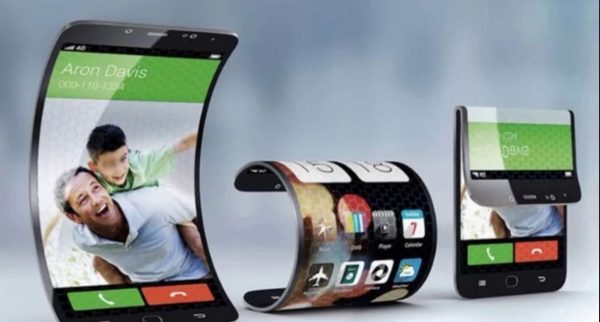Imagine never having to worry about small pockets again, instead you can just fold your phone over and over until it is a quarter of its original size. New technological advances and insights into graphene could make that future a reality.
Recently, tech giant Samsung unveiled its new foldable phone, the Samsung Galaxy Fold. It features two modes: A folded phone mode with a 4.6-inch screen and an unfolded mode where the device is laid out into a larger 7.3-inch tablet screen. This innovative design will cost consumers $1,980 USD ($2,607 CAD). Meanwhile, the Chinese tech leviathan Huawei, following Samsung’s lead, recently unveiled the Huawei Mate X, which features a 6.6-inch screen on the front as well as a 6.38-inch screen on the back; when unfolded, the two screens form an eight-inch tablet display. This phone has an even more exorbitant price of $2,600 USD ($3,469 CAD).
These new devices have many advantages; most significantly, their flexibility enables customers to double their screen size on a whim and makes the phones less prone to breaking because they are able to bend. The fact that these cellphones double as tablets also increases multitasking and productivity. Unfortunately, there are also many potential limitations associated with this new generation of cellphones.
“Longevity and reliability are among the biggest challenges: how many times can a phone be folded before it begins to fail?” Thomas Szkopek, a professor in McGill’s Department of Electrical and Computer Engineering, wrote in an email to The McGill Tribune. “It is a difficult engineering challenge to create a reliable device.”
As a standard rule, first generation devices and foldable devices are particularly unreliable because they incorporate new, untested software and hardware. Manufacturing is another issue with these products, as mass productions of bendable phones requires new supply chains and manufacturing techniques.
However, if these associated challenges can be overcome, bendable screens have the potential to transform the entire tech industry. A whole new breed of products will be available thanks to this flexible technology, like foldable TVs.
Another new innovation with the same revolutionary potential as bendable phones are graphene phones. Discovered in 2004, graphene is a carbon material constructed by laying out graphite, the same compound used in pencils, into sheets with a thickness of one atom.
Graphene has several advantages over any metal currently used in the phone industry: It conducts electricity better than copper, it is stronger than steel, and it is incredibly elastic. Graphene touch screens printed on plastic could replace screens made of indium tin oxide, making cell phones extremely thin and foldable. Graphene could also make the lithium-ion batteries currently in use longer-lasting, faster-charging, and more bendable. Furthermore, graphene could serve to create cheaper and more sensitive photo sensors.
Unfortunately, despite the incredible potential of the material, graphene also has several important defects, such as susceptibility to oxidative environments. Also, it exhibits some toxic qualities and its electrical conductivity cannot be switched off.
Nonetheless, various fields continue to conduct a great amount of research on this versatile material.
“This invention is now being applied in headphones and mobile electronics’ micro speakers [since] they are more energy efficient and give improved acoustic fidelity,” Szkopek wrote. “Beyond providing us with better acoustics, graphene could also deliver us faster internet, smaller as well as faster transistors, new types of solar panels, and even thinner and stronger condoms.”
Both foldable and graphene phones, despite their great potential, remain relatively untested technologies with an uncertain market base.









